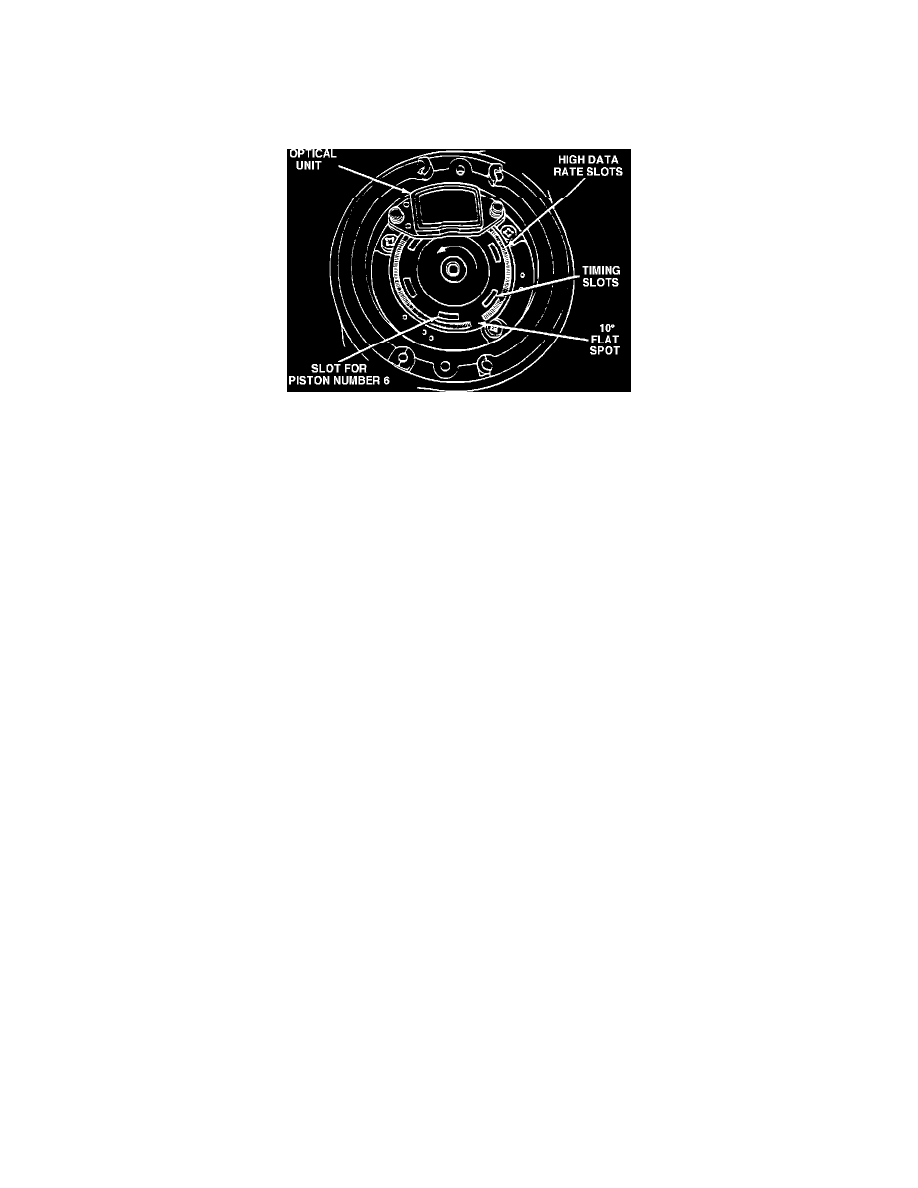3000GT AWD V6-2972cc 3.0L DOHC Turbo (1991)

Crankshaft Position Sensor: Description and Operation
Crankshaft Position and Camshaft (TDC) Sensors
The Crank Angle Sensor and the Top Dead Center Sensor are located within the unit housing. These sensors are incorporated into one unit, being a disc
and a pick-up unit. The disc is affixed to the main shaft and the light-transmitting unit is mounted stationary to the unit housing.
Crank Angle And #1 TDC Sensor
The disc contains 360 slits around its circumference to indicate the crankshaft angle. An additional 6 light-transmission slits 60° apart located inward
from the edge are used to indicate each cylinder's top dead center position. The pick-up unit assembly uses two luminous diodes and two photo diodes, in
order to detect the two different slits. There is a very slight clearance between the luminous diodes and the photo diodes, and the disc rotates within this
space.
As the distributor shaft rotates the slits at the discs edge pass between the light and the optical reading part of the unit. The light emitted from the
luminous diodes pass through the slits to the photo sensing diodes. When the photo diodes receive the light, they become conductive and generate a
signal, which is sent to the Control Unit.
Crankshaft Angle Signal:
Top dead center is detected by the signal obtained from the outer series of slits (1° slits) by reading the 10° blank spot. The ECU, based upon this signal,
determines which of the six pulses from the TDC sensor is the signal for the No.6 cylinder (reference cylinder), thus synchronizing the ECU with the
rotation of the disc in the unit. This allows the ECU to determine (with the use of its preset firing order) which pulse is the No.1 cylinder. The outer
circumference slits are also used by the ECU to assist in a more accurate ignition timing at engine speeds below 1200rpm. The Control Unit is able to
detect number one cylinder TDC by the comaring the signal generated through the inner slits on the disc and the blank space on the outer slits and
calculating the position.
No.1 Cylinder TDC Signal:
The six slits located at the inner circumference of the disc serve to detect the position of the pistons relative to top dead center. The ECU, based on this
signal, determines the fuel injection timing, and also calculates the amount of intake-air, the timing of the ignition signal, etc. for each revolution of the
engine.
